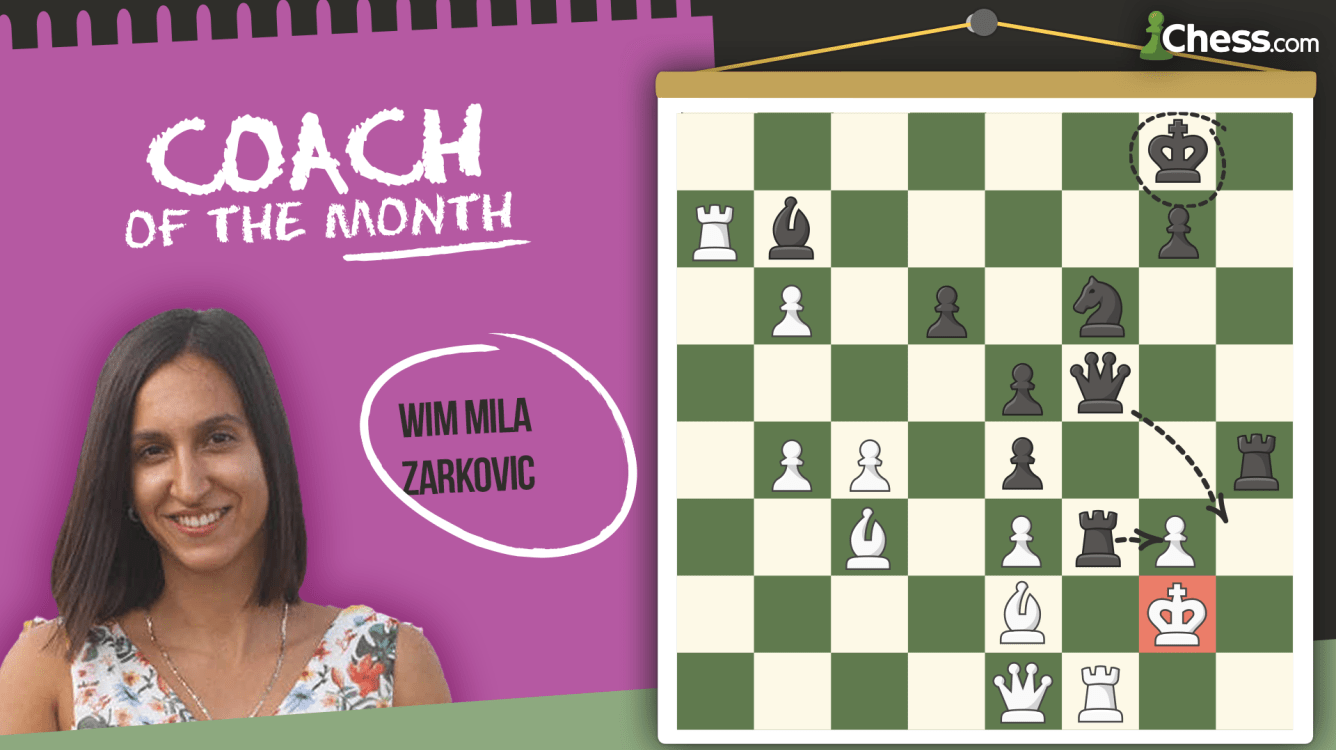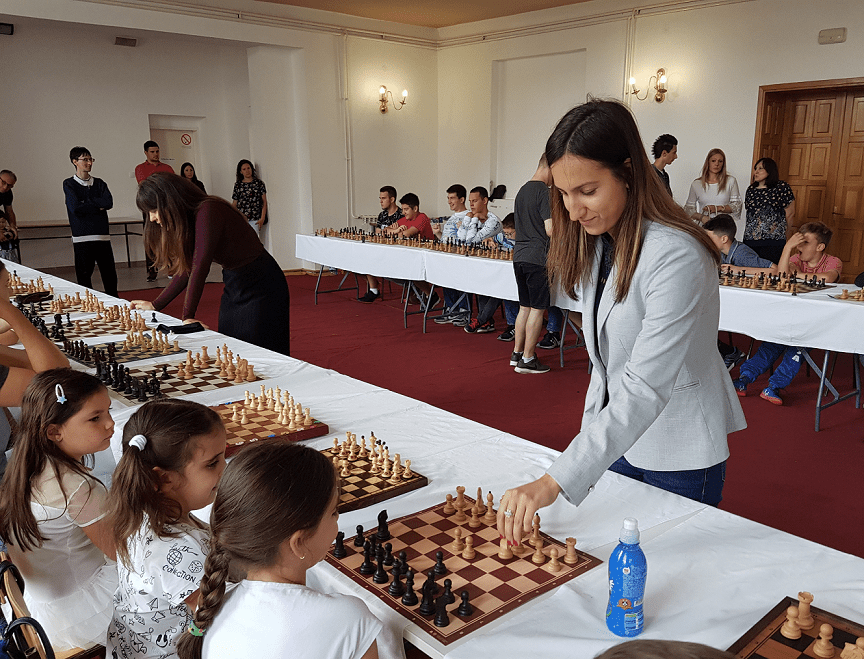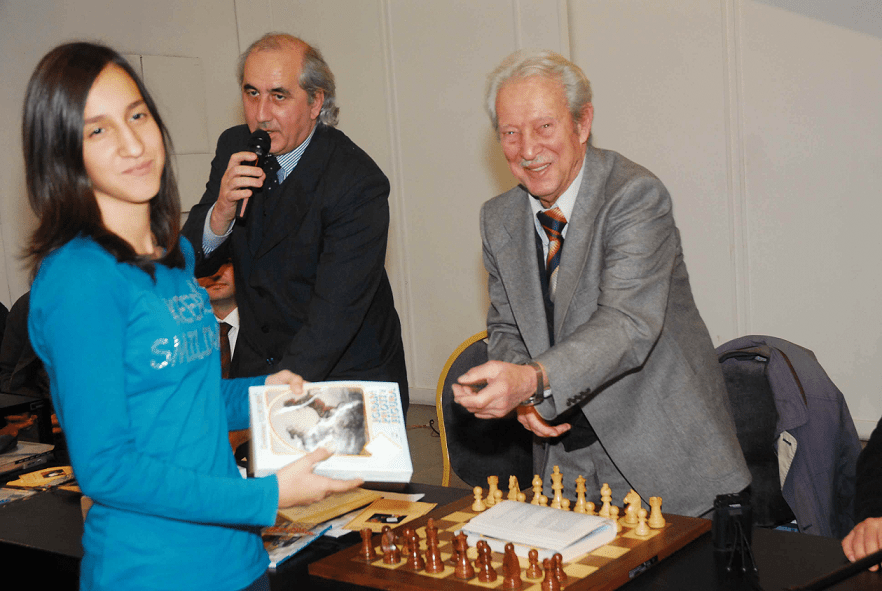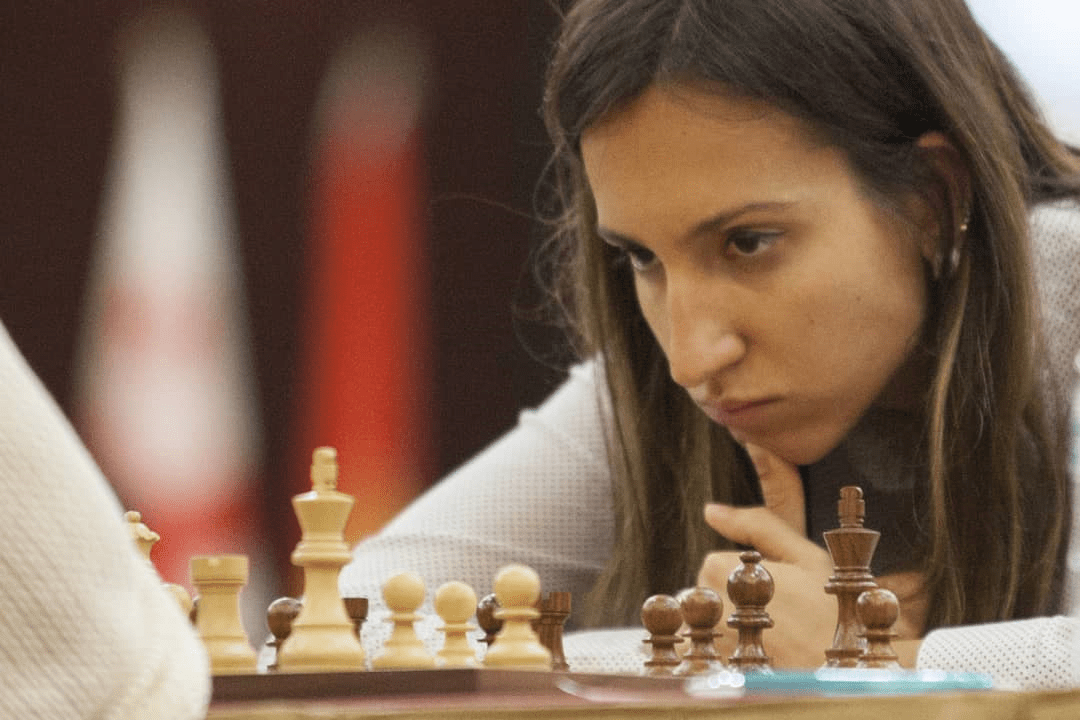
Coach Of The Month: WIM Mila Zarkovic
WIM Mila Zarkovic, a competitive chess professional with considerable international tournament experience, has represented the Serbian senior national team on multiple occasions.
She is also a popular and well-respected chess coach with a track record of creating strong and motivated chess players. Find out more about Zarkovic in this Coach of the Month interview that features puzzles, tactics, tips on how to improve your chess, and more.
Readers seeking private instruction can contact WIM Zarkovic via her Chess.com profile and can find other skilled coaches at Chess.com/coaches.
At what age were you introduced to chess, and who introduced you?
Chess has always been part of my environment; my father and both of my grandfathers played chess. When I started first grade in elementary school, I enrolled in a chess class. Soon after that, there was my first competition where I won a gold medal. The very next year, I started studying at the Nestorovic chess school.
What is your first vivid memory of chess?
Maybe not so vivid, but my first chess memory, as I recall, is a game I played with my grandpa. He is long gone now, but he was the one who taught me the rules of the game, how the pieces move, etc. In a way, he got me to fall in love with this beautiful game. That is why that game with my grandpa is very important and emotional for me in many ways. However, I cannot tell you much more about what happened on that board—all I remember is losing the game and that I started crying.

Which coaches were helpful to you in your chess career, and what was the most useful knowledge they imparted to you?
The main impact on my chess career was my first coach, IM Dejan Nestorovic. He helped me to reach the title of woman international master. Somehow our energies just worked well together. Over time, he became a friend, a psychologist, and a coach all at once. Every chess player knows how important that is in an individual sport like chess.
The coach of the women’s national team, Serbian GM Branko Damljanovic, also had a positive influence on me.
Which game do you consider your "Magnus Opus"?
One of my favorite games is one that I played at the European Women's Championship in 2013. I like the way how I managed to prepare and launch an attack, bringing all possible pieces into play and finishing with a beautiful combination at the end:
How would you describe your approach to chess coaching?
I usually analyze a few of my student's games so I can get a better understanding of their gameplay, the way they think, their weaknesses and strengths, and the openings they play.... Another alternative would be just simply playing some games with them.
Gathering that information about my students helps me a lot and lets me know what we should focus on. The way I see it, the best way to improve your gameplay is to study some of the greatest chess players. If I had to name some of them, I would single out GMs Garry Kasparov, Anatoly Karpov, Magnus Carlsen, Mikhail Tal, Emanuel Lasker, and Bobby Fischer.... Additionally, I like giving my students some short puzzles to improve their tactics.
Chess requires constant work, which is why my role as a coach is also to encourage my students, give them advice, and get them to fall in love with this game. That is my approach to chess coaching!
Chess requires constant work, which is why my role as a coach is also to encourage my students, give them advice, and get them to fall in love with this game.
What do you consider your responsibilities as a coach, and which responsibilities fall on your student?
Besides preparing a lesson, I think the primary responsibility of a coach is to convey their love of the game. A great chess player, GM Svetozar Gligoric, said many times that he wanted to leave chess even though he was a top chess player. Can you imagine how many times a young chess player thinks something like that? There are many ups and downs, and a coach is there to help their students to overcome those challenges.
Students are expected above all to be committed as well as hard-working.

What piece of advice do you give your students that more chess players could benefit from?
As long as chess is a source of pleasure and happiness, despite difficulties and failures, progress is certain. As in business, success comes only if we love the work. Everything else is torture.
What is your favorite teaching game that our readers might not have seen before?
This game shows some basic attacking principles. I like the way that White has gradually built an attack and exploited their opponent’s weaknesses. First, he regrouped his forces to put maximum pressure on the very weak f7-pawn. Sometimes beginners do not understand that even though you cannot win material right away, you can still gain an enormous advantage in piece activity or by creating a new weakness for your opponent.
Next, White forced Black to play g6, which additionally weakened the dark squares. By trading the bishop for the knight, White exchanged a key defender which made their attack even stronger. As you can see from the game, the key defender is not always the strongest piece!
What puzzle that you give students tells you the most about how they think?
Very often, beginners and intermediate players pay little attention to strategy. I like to show this example and ask them to evaluate the position, point out strengths and weaknesses for both sides, and create a plan for how they would continue to play. From this example, I can learn a lot about a student’s positional understanding.
Do you prefer to teach online or offline? What do you think is different about teaching online?
Genuinely, I prefer teaching online. In my opinion, it gives many more options and opportunities. For me as a coach, it's a lot easier and faster to set up a certain position, load games, etc. In addition, living in different countries or even continents is no longer much of a barrier due to the internet. Now you can connect with anyone in the world and, as I see it, that is the biggest advantage that the modern era gives us.
What do you consider the most valuable training tool that the internet provides?
Online chess platforms have proven to be great places for learning. I am fond of Puzzle Rush on Chess.com, which is helpful for improving calculation and learning how to act under time pressure. I use it myself and strongly suggest it to my students.

Lastly, which underappreciated chess book should every chess player read?
I would recommend Secrets of Positional Sacrifice written by my coach and GM Nikola Nestorovic. Players usually tend to see a sacrifice that leads to winning material or an immediate checkmate. However, positional sacrifice involves deeper ideas and cannot be easily calculated. I would say it is the most difficult maneuver in chess because you are often not able to predict the outcome. The book covers positional pawn sacrifices, exchange sacrifices, piece sacrifices, and queen sacrifices.
Are you a chess coach who's looking to find new students, build your brand, and get paid more for the work that you're already doing? Check out Chess.com's Coach Affiliate Program.
Previous Coaches of the Month:
- GM Rashad Babaev
- WGM Petra Papp
- Andrey Malkhasyan
- IM Pawel Weichhold
- AGM Jack Rodgers
- FM Alessandro Santagati
- FM Amir Hadzovic
- WFM Fruzsina Szente-Varga
- WIM Tijana Blagojevic
- Charlie Rosado
- GM Swapnil Dhopade
- IM Alberto Chueca
- Frank Johnson
- WGM Keti Tsatsalashvili
- IM Kostya Kavutskiy
- GM Arturs Neiksans
- FM James Canty III
- IM Levy Rozman
- CM Gabor Horvath
- AGM Colin Stapczynski
- NM Bojan Lukajic
- IM Mateusz Bobula
- IM Attila Turzo
- GM Max Illingworth






